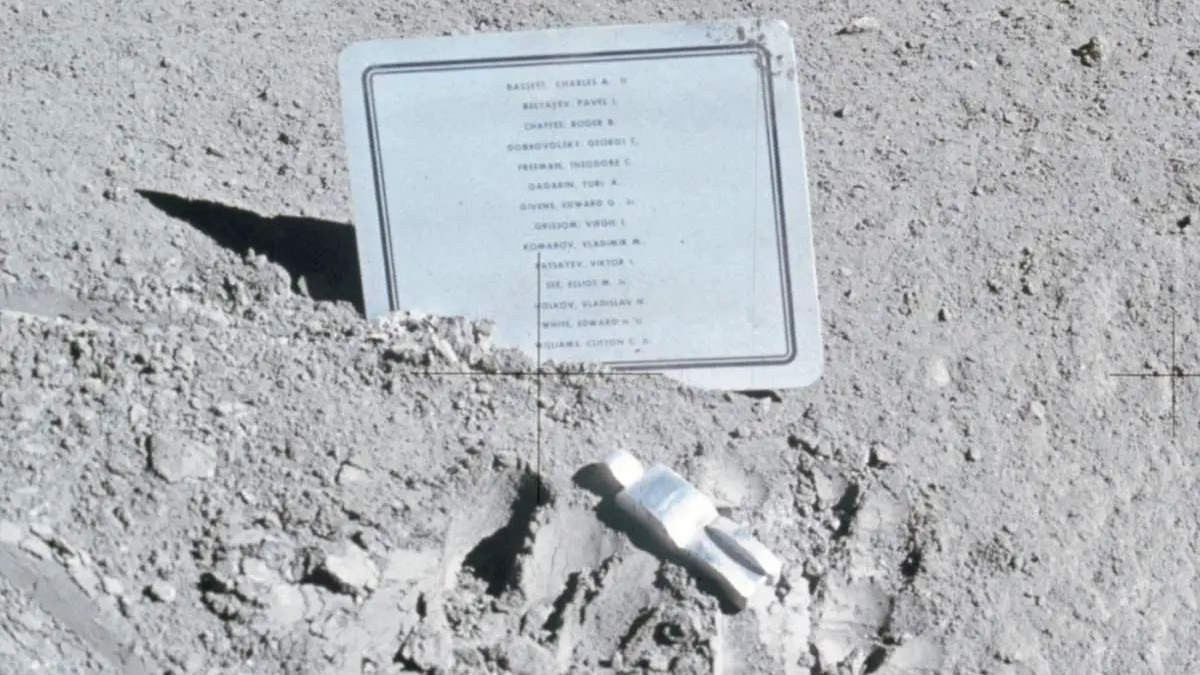On August 2, 1971, during the third EVA (Extravehicular activity) of the Apollo 15 (see notes 1) mission, commander David Scott drove the rover away from Lunar Module, where the television camera could be used to observe the lunar liftoff. Then he left a small aluminum statuette called “Fallen Astronaut” next to the rover, which commemorates those astronauts and cosmonauts who lost their lives in the pursuit of space exploration. Scott also left a plaque bearing the names of 14 known American astronauts and Soviet cosmonauts deceased by that time, along with the statuette. The names of Astronauts and cosmonauts were inscribed in alphabetical order on the plaque.
The crew of Apollo 15 kept the memorial’s existence a secret until after the completion of the mission.
Fallen Astronaut Statuette
The “fallen astronaut” statuette was created by the Belgian sculptor, painter, and printmaker Paul Van Hoeydonck. It is an 8.5-centimeter (3.3 in) aluminum sculpture, a small stylized figure, meant to depict an astronaut in a spacesuit.
Before the mission, commander David Scott met Van Hoeydonck at a dinner party. It was there agreed that Van Hoeydonck would create a small statuette for Scott to place on the Moon. Scott’s purpose was to commemorate those astronauts and cosmonauts who had lost their lives in the furtherance of space exploration. He also designed and separately made a plaque listing fourteen American astronauts and Soviet cosmonauts’ names who lost their lives in the pursuit of space exploration.
Van Hoeydonck was given a set of design specifications: the sculpture was to be lightweight but sturdy, capable of withstanding the temperature extremes of the Moon; it could not be identifiably male or female nor of any identifiable ethnic group. According to Scott, it was agreed Van Hoeydonck’s name would not be made public, to avoid the commercial exploitation of the US government’s space program. Scott kept the agreement secret from NASA management prior to the mission, smuggling the statue aboard his spacecraft (see notes 2)
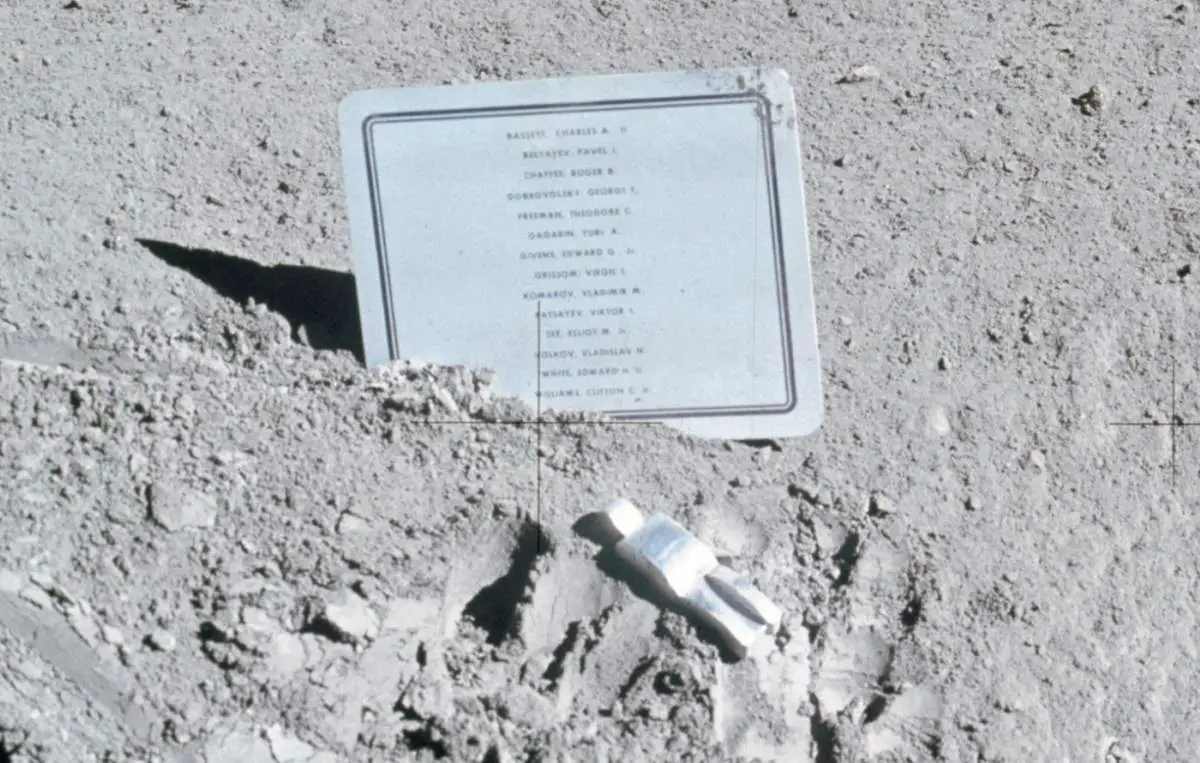
14 Fallen Astronauts
The names on the plaque are:
- Charles A. Bassett II
- Pavel I. Belyayev
- Roger B. Chaffee
- Georgi Dobrovolsky
- Theodore C. Freeman
- Yuri A. Gagarin
- Edward G. Givens Jr.
- Virgil I. Grissom
- Vladimir Komarov
- Viktor Patsayev
- Elliot M. See Jr.
- Vladislav Volkov
- Edward H. White II
- Clifton C. Williams Jr.
Theodore Freeman
Theodore Cordy “Ted” Freeman was an American aeronautical engineer, U.S. Air Force officer, test pilot, and NASA astronaut. He was born in Haverford, Pennsylvania, on February 18, 1930. Elected in the third group of NASA astronauts in 1963, he was killed a year later in the crash of a T-38 jet on October 31, 1964, marking the first fatality among the NASA Astronaut Corps.
Gemini 9 Astronauts
Charles Arthur “Charlie” Bassett II (December 30, 1931 – February 28, 1966), and his crewmate Elliot McKay See Jr. (July 23, 1927 – February 28, 1966) were selected as NASA astronauts and assigned to Gemini 9, a 1966 crewed spaceflight in NASA’s Gemini program. But they died in an airplane crash during training for their first spaceflight.
Apollo 1: The Fatal Fire
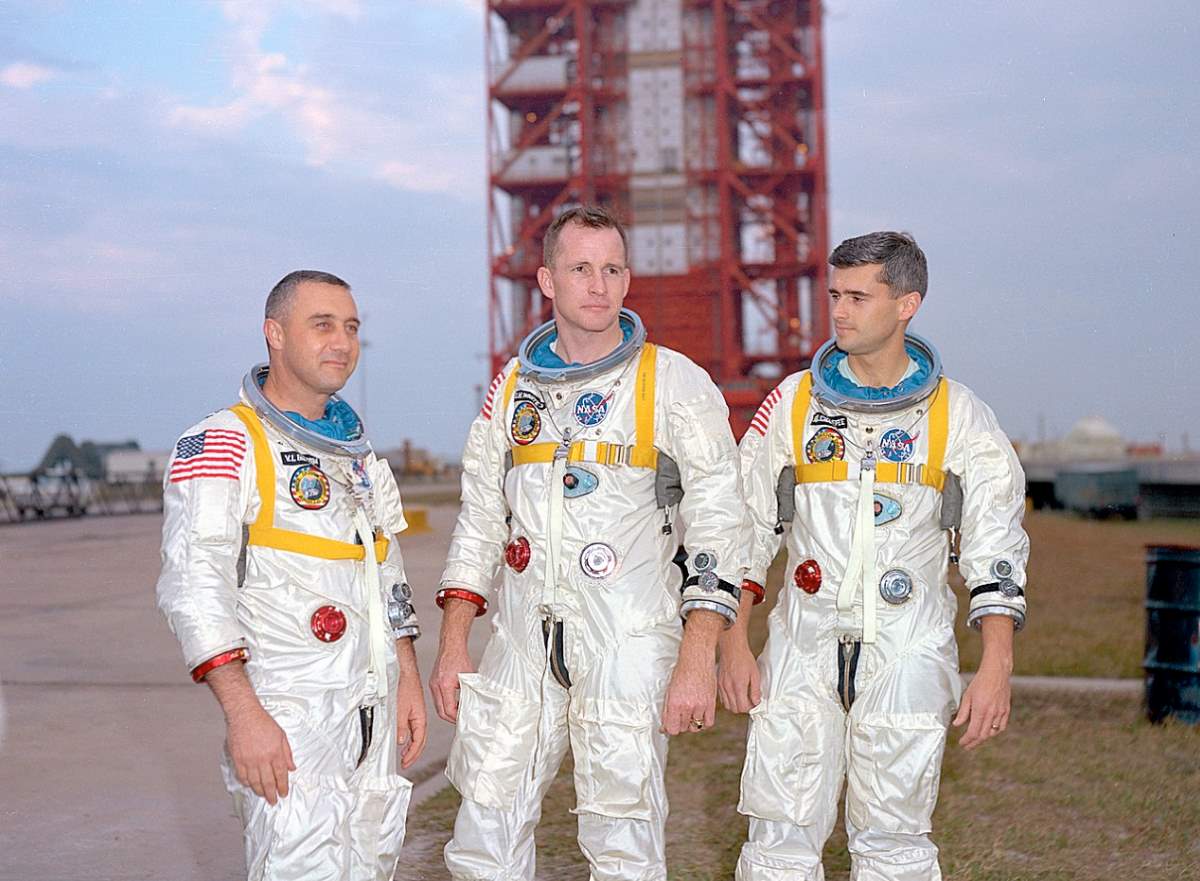
Roger B. Chaffee (b. February 15, 1935), Virgil I. Grissom (b. April 3, 1926), and Edward H. White II (b. November 14, 1930) died on January 27, 1967, when a flash fire swept through the Apollo 1 command module during a launch rehearsal test. The three men inside perished despite the best efforts of the ground crew.
It would take more than 18 months, and extensive redesigns, before NASA sent more humans into space. The Apollo program changed forever after the incident. The improvements in astronaut safety allowed the agency to complete the rest of the program with no further fatalities. The agency also met United States President John F. Kennedy’s goal of landing a human on the moon in 1969, during Apollo 11.
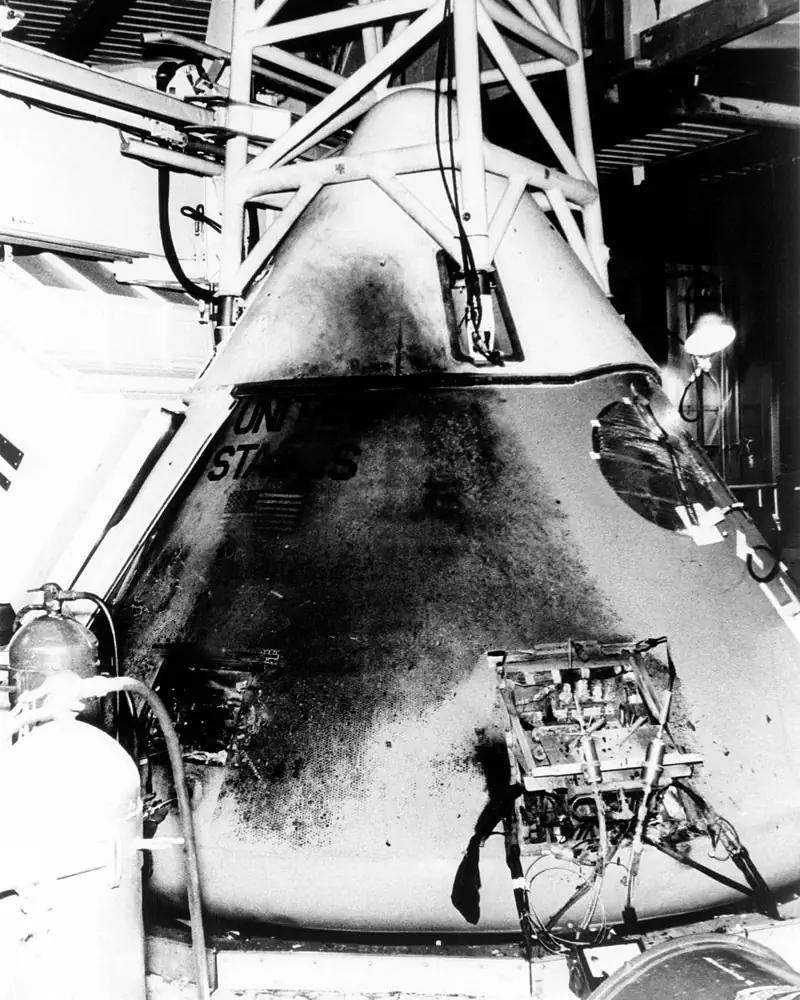
Related: Apollo 1 Tragedy [January 27, 1967]
Vladimir Komarov
Soviet cosmonaut Vladimir Komarov (16 March 1927- 24 April 1967) was the first cosmonaut to fly in space twice, but unfortunately, during his second flight, Soyuz 1, Komarov was killed when the descent module crashed into the ground due to a parachute failure. This was the first in-flight fatality in the history of spaceflight.
In October 1964, Komarov commanded Voskhod 1, the first spaceflight to carry more than one crew member.
Edward Givens
Edward Galen “Ed” Givens Jr. (January 5, 1930 – June 6, 1967), (Maj, USAF), was a United States Air Force officer, test pilot, and NASA astronaut. Selected by NASA in 1966 as a member of the fifth astronaut group, he was killed in an automobile accident before being assigned to a prime or backup spaceflight crew.
Clifton Williams
Clifton Curtis “C.C.” Williams Jr. (September 26, 1932 – October 5, 1967), (Major, USMC), was an American naval aviator, test pilot, mechanical engineer, Major in the United States Marine Corps, and NASA astronaut, who was killed in a plane crash; he had never been to space. The crash was caused by a mechanical failure in a NASA T-38 jet trainer, which he was piloting to visit his parents in Mobile, Alabama. Although he was never on a spaceflight, he served as a backup pilot for the mission Gemini 10, which took place in July 1966.
Yuri Gagarin
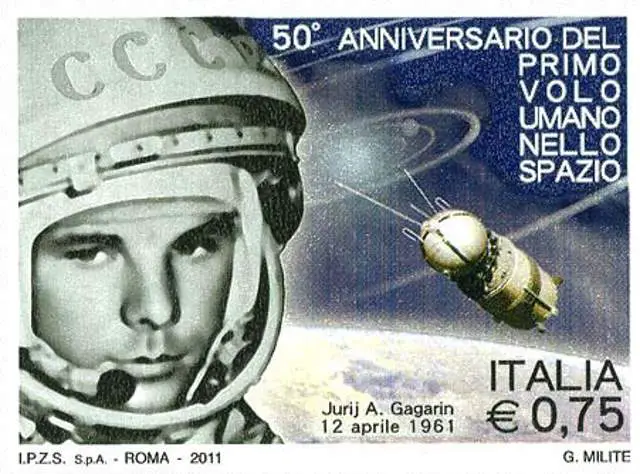
Probably the most famous name on the list, Yuri Alekseyevich Gagarin (9 March 1934 – 27 March 1968) was a Russian pilot and cosmonaut. He was the first human to journey into outer space, when his Vostok spacecraft completed an orbit of the Earth on 12 April 1961. After being the first human in space, Gagarin became an international celebrity and was awarded many medals and titles, including Hero of the Soviet Union, the nation’s highest honor.
Vostok 1 marked his only spaceflight, but he served as backup crew to the Soyuz 1 mission, which ended in a fatal crash: on 27 March 1968, while on a routine training flight from Chkalovsky Air Base, he and flight instructor Vladimir Seryogin died in a MiG-15UTI crash near the town of Kirzhach. The bodies of Gagarin and Seryogin were cremated and the ashes were buried in the walls of the Kremlin on Red Square in Moscow.
Pavel Belyayev
Pavel Ivanovich Belyayev (26 June 1925 – 10 January 1970), was the first commander of the cosmonaut corps and the cosmonaut who commanded the historic Voskhod 2 mission which saw the first human to walk in space in 1965. He actually didn’t die in a space exploration-related accident: according to Wikipedia, Belyayev died five years after the Voskhod 2 mission in 1970 from peritonitis that resulted from an operation on a stomach ulcer.
Soyuz 11 Cosmonauts
Of those who have died in the pursuit of spaceflight, only the crew of Soyuz 11 was exposed to the environment above the Kármán line, which lies at an altitude of 100 km (62 mi; 330,000 ft) above the Earth’s sea level, and commonly represents the boundary between the Earth’s atmosphere and outer space. So technically, even to date, only three people have died in space: Georgiy Timofeyevich Dobrovolsky (b. June 1, 1928), Viktor Ivanovich Patsayev (b. 19 June 1933), and Vladislav Nikolayevich Volkov (November 23, 1935).
Soyuz 11 was the only crewed mission to board the world’s first space station, Salyut 1 (Soyuz 10 had soft-docked but had not been able to enter due to latching problems). The mission arrived at the space station on 7 June 1971 and departed on 30 June. The mission ended in disaster when the crew capsule depressurized during preparations for re-entry, killing the three-man crew.
After the disaster, there were changes made to the valves in the Soyuz descent module to make them safer, and it’s now a mission rule that cosmonauts and astronauts must wear their proper spacesuits during descent as an added protection against decompression. Not a single cosmonaut or astronaut has lost their life because of decompression since 1971.
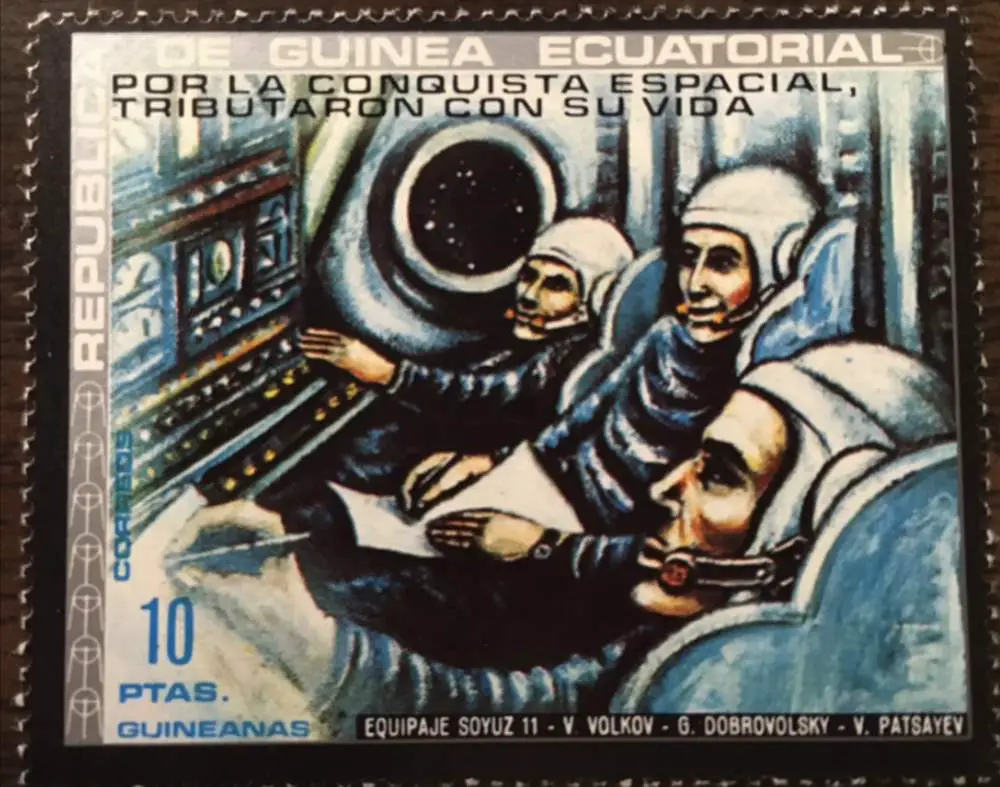
Here is a great video about the unfortunate Soyuz 11 crew, created by Amy Shira Teitel, the Canadian-American author, popular science writer, spaceflight historian, YouTuber, and podcaster, best known for writing Breaking the Chains of Gravity, and her YouTube channel, Vintage Space.
Transcript of NASA News Release 72-189 (September 15, 1972), describing the origin of Fallen Astronaut and the subsequent controversy
The part of the 1972 press release that describes the origin of the Fallen Astronaut sculpture and the subsequent controversy:
The Apollo 15 crew desired to make a personal, private, symbolic gesture commemorating all deceased astronauts and cosmonauts; this desire was reinforced by the death the month before of three Soviet cosmonauts during the Soyuz 11 flight. Scott had met Paul Van Hoeydonck, a Belgian sculptor specializing in space themes, at a dinner party and had discussed the possibility of such a memorial.
From that discussion came the Apollo 15 crew’s decision to place on the moon a small sculptured aluminum figure provided by Van Hoeydonck, together with a plaque listing the names of the deceased, as the memorial. The crew’s clear understanding with Van Hoeydonck was that there was to be no commercial or personal exploitation of this memorial.
In a post-mission press conference, the crew reported the memorial ceremony and, in keeping with their understanding, did not reveal the sculptor’s name.
In November 1971 the Smithsonian Institution indicated a desire to display a replica of the memorial statue and plaque; the Apollo 15 crew agreed under the conditions that the display be in good taste and without publicity. Scott undertook to get the replicas for the museum.
In March 1972, Scott forwarded replicas of the plaque to the museum. In April, responding to Scott’s request, Van Hoeydonck presented the museum with a replica of the statuette. The replicas are currently on display there.
In May 1972, Scott learned that further replicas of the statuette might be offered for sale. He wrote Van Hoeydonck asking him to check on this rumor. In his response, Van Hoeydonck confirmed that replicas were intended for sale and indicated that he felt no constraints or restrictions in this matter. The Apollo 15 crew strongly disagrees with this position, feeling that their solemn understanding of Van Hoeydonck prohibits any such commercialization.
The 950 replicas of the “Fallen Astronaut” figurine signed by the sculptor have been advertised for sale by the Waddell Gallery of New York at a price of $750 apiece.
Notes
- Apollo 15 was the ninth crewed mission in the United States Apollo program, the fourth to land on the Moon, and the eighth successful crewed mission. It was launched on July 26, 1971, and landed on August 7, 1971. Total mission duration was 12 days, 7 hours, 11 minutes, 53 seconds with a total of 39 minutes and 7 seconds of EVA (Extravehicular activity). The Lunar Roving Vehicle (LRV) was first used during the Apollo 15 mission.
- Van Hoeydonck, the sculptor of the “Fallen Astronaut” gives a different account of the agreement: according to an interview in the Belgian newspaper Le Soir, the statue was supposed to be a representation of all humankind, not only fallen astronauts or cosmonauts. He claimed he did not know the statue would be used as a memorial for the fallen space-goers, and the name given to the work was neither chosen nor approved by him; he had intended the figure to be left standing upright. He also denies it was agreed he would remain anonymous.
Sources
- “Memorial to Fallen Astronauts on the Moon” on NASA.gov
- Fallen Astronaut on Wikipedia
- Apollo 15 on Wikipedia
- Pavel Belyayev on Wikipedia
- Apollo 1: The Fatal Fire on NASA.gov
- Soyuz 11 on Wikipedia
- Theodore Freeman on Wikipedia
- Yuri Gagarin on Wikipedia
- Edward Givens on Wikipedia
- Vladimir Komarov on Wikipedia
- Clifton Williams on Wikipedia
- How Many Elephants are Left in the World in 2025? - August 17, 2025
- Moon Landings: All-Time List [1966-2025] - February 2, 2025
- What Is Max-Q and Why Is It Important During Rocket Launches? - January 16, 2025
